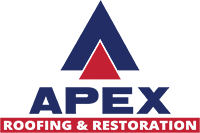Your roof serves as a protective shield, guarding you and your possessions from the elements. However, it remains one of the most vulnerable components of your home, exposed continually to harsh weather conditions and potential damage. To avert costly repairs or the need for a complete roof replacement, it’s crucial to be able to recognize signs of roof damage early on. Let’s delve into some common signs of roof damage that every homeowner should stay vigilant for:
1. Leaky Ceilings: One of the most unmistakable indicators of roof damage is the presence of water stains on your ceilings. These stains may manifest as discolored patches, peeling wallpaper, or paint that appears bubbled. Leaky ceilings often signify compromised roof shingles, missing shingles, or a weakened roof structure. Overlooking these leaks can lead to more severe issues such as mold growth and structural damage.
2. Missing or Damaged Shingles: After a heavy storm, make a close examination of your roof. If you spot any missing or damaged shingles, it’s a clear indication of potential roof damage. Shingles play a critical role in safeguarding your roof’s underlying structure, and their absence can result in water infiltration, gradually undermining your roof’s integrity over time.
3. Curling or Buckling Shingles: Curling or buckling shingles can be attributed to exposure to extreme weather conditions or insufficient ventilation. Such shingles are at a higher risk of being dislodged during a storm, leaving your roof more susceptible to further harm. Keep a vigilant eye on any shingles that appear misshapen or warped.
4. Granule Loss: Asphalt shingles are often embedded with granules on their surface to protect against UV rays. With the passage of time, these granules can wear away. A significant accumulation of granules in your gutters or the emergence of bald shingles indicates aging and vulnerable shingles.
5. Sagging Roof: A sagging roof is a serious cause for concern. It may be indicative of structural damage, water retention, or rot. If you observe any areas of your roof that appear sunken or sagging, it is imperative to seek professional assistance immediately to prevent further damage or a potential roof collapse.
6. Damaged Flashing: Flashing serves as a crucial component of your roof, sealing joints and preventing water infiltration. If the flashing is damaged or missing, it can create an entry point for water. Pay close attention to areas around vents, chimneys, and skylights, as these are common sites where flashing is used.
7. Excessive Moss or Algae Growth: While moss and algae may not directly damage your roof, they can trap moisture against the surface, leading to shingle decay and mold growth. Regularly cleaning your roof can be an effective preventive measure.
8. Daylight in the Attic: During daylight hours, inspect your attic. The presence of sunlight seeping through the roof boards is a conspicuous sign of roof damage. This could result from damaged shingles, decaying wood, or gaps in the roof structure.
9. Higher Energy Bills: If your energy bills have been on a steady incline, it may be attributed to poor roof insulation or ventilation, resulting from roof damage. A damaged roof can adversely affect your home’s energy efficiency, leading to increased heating and cooling costs.
10. Age of the Roof: Even in the absence of visible damage, the age of your roof is a critical factor. Most roofing materials come with a finite lifespan, and as they approach the end of that lifespan, they become increasingly susceptible to damage. Regular roof inspections are indispensable as your roof matures.
Recognizing signs of roof damage is paramount in preserving the structural soundness and longevity of your home. Regular inspections and maintenance play a pivotal role in identifying issues before they escalate into major problems. Should you detect any of these signs or have concerns regarding your roof’s condition, it’s advisable to engage a professional roofing contractor for a comprehensive assessment of the damage and recommendations for requisite repairs or replacements.
By proactively addressing signs of roof damage, you not only safeguard your home but also mitigate the expenses associated with substantial repairs.
Schedule an Inspection today.
